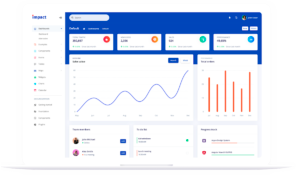What is the Hybrid Work Model and how to get it right in 2022?
9 min read
Hybrid work model is very different from the normal in-office work arrangement. In this post, we look at what is the hybrid work model and how to successfully implement it in 2022.

What is the hybrid work model?
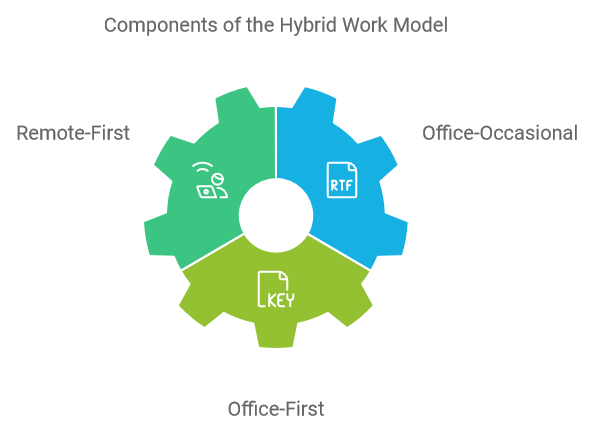
Hybrid work model is a flexible model in which employees can work from both onsite and offsite locations. This arrangement can be worked out between the employer and employees depending on the work.
There is no denying that the pandemic has changed the way we work. It also proved to the skeptics that remote work can be productive. Most employees now have an effective office setup to work from home. The shift is in the mindset and the adoption of technology is helping usher in this new working arrangement.
In December 2020, Google announced that the company would require its employees to work from the office at least 3 days a week, and the rest of the time remotely. Since then, companies of all sizes and across industries have been exploring the hybrid work model.
According to a Gartner survey, at least 80 percent of companies have announced a work-from-home policy since the start of the pandemic. Of these, a whopping 47 percent plan to allow employees to work from home full-time. The hybrid work arrangement that involves employees working from home for part of the week is now the preferred work model for most companies.
Different avatars of a Hybrid Work Model
You can select a hybrid working model that best suits your business:
Remote-First – most organizations went remote-first during the pandemic. This is the all-in variation where anyone who can work remotely is allowed to do so.
Office-Occasional – even with COVID cases on the decline and people getting vaccinated, some businesses continue to prefer remote work. But they also want the advantages of in-person meetings and better employee bonding that an office can foster.
The Office-occasional is a good option for these companies as it gives employees the flexibility to work from anywhere. In this model, employees come into the office for a few days a week.
While most employees love working from home, many also long for a chance to meet co-workers and escape the loneliness of working from home. A flexible work model like office-occasional, allows employees to work in an office or from home as per individual’s needs.
Office-First – in this approach, technically, the organization offers a remote work policy. However, it prefers that most employees work from the office. Some employees are given the freedom to work from home as per their needs or job requirements.
Why are companies considering the hybrid work model for their teams?
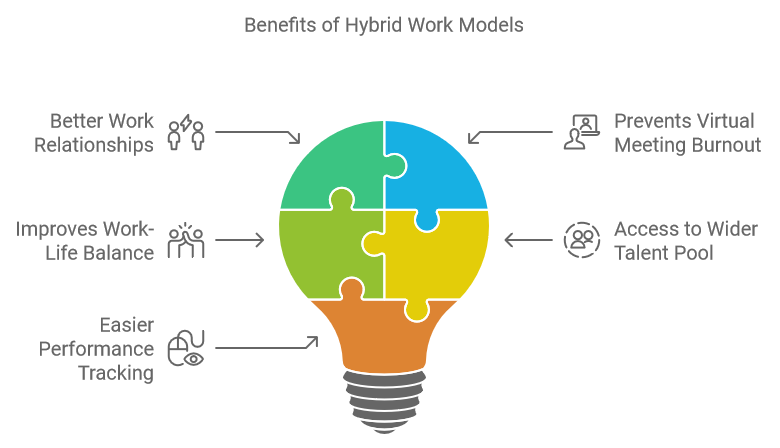
Remote work has been growing in popularity due to greater digitization of work roles, faster internet and availability of cheaper laptops. Remote work also helps a company find the best talent by looking beyond its city/region or even country. Working remotely also reduces the cost of office space, a big deal for small businesses.
When the pandemic hit, companies both large and small transitioned to remote working. They were forced to create the processes, and IT infrastructure needed to support working from home. They learned and adapted quickly to evolve a system that ensures employee productivity, information security, and employee engagement.
That employees continued to work through the crisis with no loss in productivity has silenced even the worst critics of remote work. But does it make sense to continue working from home as the economy opens up and people are allowed to work from the office?
In a Statista survey in 2020, over 60% of employers said that they have employees working from both the office and home. This is a clear sign that companies are warming up to the idea of hybrid work models. And with good reason, too!
Here are the top reasons a hybrid work arrangement makes sense, today and tomorrow.
Working from the same space has its advantages. It makes for better collaboration and promotes good work relationships within the teams. Even though virtual meetings and video calls have become the norm, personal and direct interactions can improve communication and foster trust and team spirit. A hybrid work model gives employees a chance to meet and interact at a personal level.
- It prevents virtual meeting burnout
Virtual meeting fatigue and burnout are very real as many people have experienced first-hand during the lockdown remote working. Too many meetings and interactions with colleagues over video conferences can be tiring. They can also lead to poor communication and lead to lack of enthusiasm in the team. A hybrid model helps balance out virtual meetings with real ones.
- It improves work-life balance
When employees are given the flexibility to work from home or remotely, they achieve a better work-life balance. The long commute time is automatically reduced, giving them more time for activities other than work.
Even before the pandemic hit, evidence suggested that remote working could boost productivity. However, some employees might find it hard to be productive when not working from the office. In such cases, a hybrid model can be the win-win solution to get the best of both worlds.
- It gives employers access to a wider talent pool
The option to work remotely has always been an attractive benefit for employees. With the pandemic enabling this to a large extent, many employees are now accustomed to this benefit. When operations across organizations open in full swing, employees looking to switch will most definitely look for options where they can work remotely.
By adopting a flexible work model, employers are opening their doors wide for those employees who are more likely to choose companies with flexible work models.
- It makes tracking employee performance easier
Hybrid teams make use of virtual collaboration tools, which makes it easier to track performance. High-performing employees also get better visibility and recognition. At the same time, managers can quickly identify underperforming employees and address their issues.
What are the pros and cons of a Hybrid Work Arrangement?
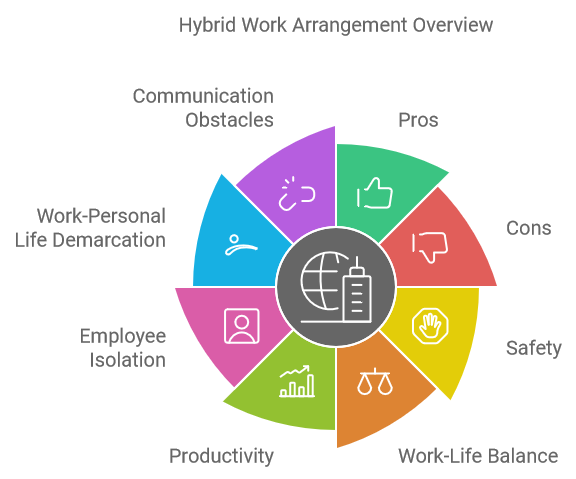
If you are considering hybrid working, here are some pros and cons to consider:
Pros of hybrid working
- Norms of social distancing followed, making it a safer option
- An efficient work-life balance
- Increased productivity
Cons of the hybrid working model –
- Risks of employee isolation
- Difficult to demarcate work and personal life
- Obstacles in building relations and establishing communication with employees
Should you adopt the hybrid work model?
We created this post to help you answer that question. In the next section, we look at the options you can consider and how to implement the hybrid work arrangement in your organization.
What are the things you should consider before switching to the Hybrid Work Model?
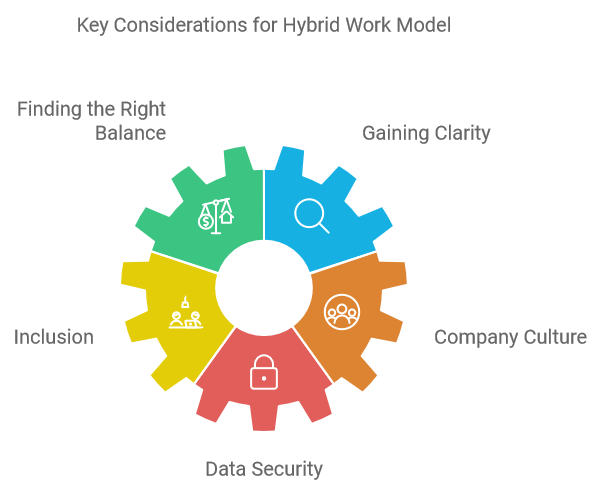
To maximize the benefits of hybrid working and reduce challenges, a well-laid-out plan outlining responsibilities, addressing employee well-being, and prioritizing meaningful work is vital.
A McKinsey research found that 80 percent of remote workers enjoy working from home, and 69 percent are just as or even more productive working from home than from the office. However, working remotely all the time is new to most of us and not the preferred option for many.
So what are the key things to be considered as you plan for this new way of working?
According to PwC research, 68 percent of executives believe employees must work in the office at least three days a week to retain company culture. But over 55 percent of employees prefer working remotely at least three days a week. Clearly, there is a need to balance the two viewpoints.
Businesses need to identify employees who should work from the office and for how many days. And, when employees are working from home, managers must plan on the effectiveness of employee interaction with their team members.
- Gaining clarity
Finding answers to a few key questions will help you get a clear picture of how to prepare for the hybrid work model:
- How many days should people work from the office?
- Why does a particular employee need to work in the office?
- Should certain teams be present in the office on the same days for meetings and collaboration?
- What types of meetings are best held in-person and which ones can be conducted virtually?
There isn’t one right answer to these questions, as the answers depend on your industry, the context of your team, and the extent of your willingness to experiment with a hybrid work model.
A well-laid-out process outlining the policies will help you effectively manage your workforce. Follow the process and make changes along the way until you’ve found a model that works best for you.
Opting for a hybrid workplace is an exciting idea, but it is bound to fail if you don’t define what it is going to look like.
- Inclusion
Inclusion becomes a significant issue with a remote team. The in-person absence of someone does not mean the person is not an equal part of the team. But that’s exactly what may happen if you are not careful.
Diversity and inclusion have undergone a change due to the diverse set of experiences during the pandemic. The reasons could be anything from their living circumstances to the kind of responsibilities they have at work.
There is bound to be an unconscious bias against those employees who work remotely more than the others. There could be instances where they get left out of conversations and are intentionally not given promotion.
If you are looking at the hybrid model, make sure you have the channels of communication open. Irrespective of the employees’ location, make sure they are involved in the company and team activities. This makes it easy for work-from-home employees to voice their concerns and provide feedback.
- Company culture
The company culture is the foundation of any business that talks about the values of the workplace. With a reduced personal touch, it is challenging to build the culture. However, it is important to embrace the in-office behavior and expectations through remote working as well.
The right culture must support your chosen model. For example, if you want to go remote first, your must develop a remote-first culture in your company.
Mentoring, coaching, and supporting employees in geographically diverse locations is part of building the hybrid work culture. It enables personal growth and prioritization of quality work. Weekly catch-ups and check-in meetings are a great way to facilitate an inclusive and positive workplace.
- Data security
Sensitive information is a part of every organization. If your remote employees have access to or handle confidential data, you must work with IT to ensure necessary security measures are in place.
Cybersecurity training, software, company-issued systems are some of the things to be considered before adopting the hybrid work model. In the case of a highly regulated industry, it is worth checking policies, contract stipulations, and regulations before permitting remote working for your employees.
Toolkitcafe is a resource to help you create IT policies for data security and other needs.
How to make a hybrid workplace model work for your business?
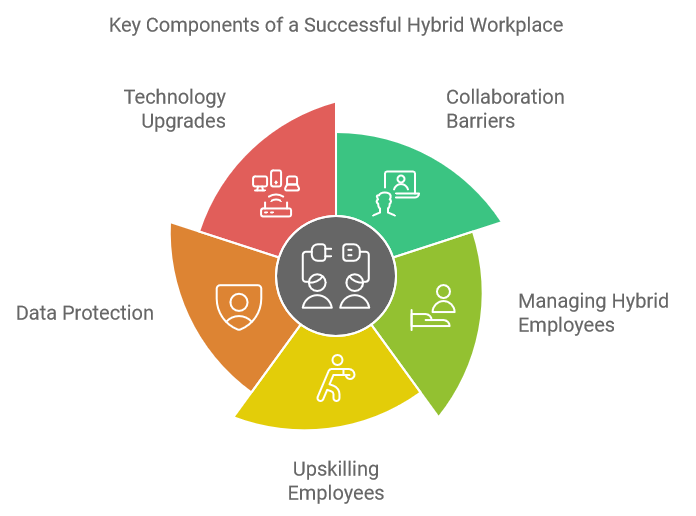
While working from home became a necessity for most in 2020, it is expected that fewer than 45% will return to full-time office-based working in 2021. Most will split their time between both home and office. It is a given that despite the rise in remote working, the need for an office will always be there. So how do you make this hybrid workplace model work for you?
Start with creating a hybrid work policy that addresses following issues:
Remote working employees usually miss out on the office culture, spontaneous communication, and other activities within the teams.
Business leaders should create opportunities to bring their team together through connections, calls, and creative sessions. This allows open communication and a feeling of inclusiveness.
- Managing hybrid employees
The hybrid work environment can make some employees feel a lack of recognition because they are working from home. It is challenging to offer support to teams across locations and ensuring their cohesion.
Motivating employees and retaining connection while working remotely is important to the overall success of work.
- Upskilling Employees
To stay updated with developments and innovations in the industry, companies must work towards upskilling their employees.
You must identify the current skill set of employees, review training modules and edit KPIs that do not assist in a hybrid work arrangement. You should target skills that can help your team embody the traits that help accomplish the company goals while retaining a healthy work process.
- Data Protection
Some employers are reluctant to allow employees to work from home due to concerns over sensitive data. There is always a security risk when employees access office systems from home. Companies need to use security software, identity and access management tools and policies to ensure safe access to confidential information.
- Technology Upgrades
A hybrid model will be a major change for many companies. It needs a technology upgrade to facilitate working from anywhere. Apart from security technology, companies also need to invest in virtual collaboration and communication tools. You will also need to create a robust BYOD management policy to support employees’ personal computing devices.
Creating a culture where everyone can work from anywhere
There is an unmistakable positive shift in mindset towards work from anywhere culture. There is improved trust between the managers and the team members, a key driver of all workplace changes.
Before the pandemic, most managers believed employees needed to be present in the office to be productive. The time employees spent at their desks was considered a strong indicator of their productivity.
This mindset has now given way to a more scientific and data-driven way to measure productivity of remote teams. Managers can track productivity through various tools like project, task and time tracking software employees use at work. Also, there is a general inclination to not be too finicky about how much time an employee spends at the desk, as long as the work gets done.
This culture is anchored on trust, allowing both employees and managers to better manage their expectations and responsibilities. Open communication and efficient collaboration are key factors for a successful remote working scenario.
Is your technology ready for the hybrid model?
Work from home has enabled businesses to stay afloat during the pandemic. Companies have seen similar or even higher levels of productivity with a reduction in office costs. The change is underpinned by the new breed of digital workplace technologies.
To reap the benefits of a hybrid work model, you must provide the right tools for uninterrupted work, collaboration, and communication.
Download the Work-from-Home IT Toolkit
Major technological upgrades will be a part of the change that many companies will adopt with the hybrid model. For example, Cloud migration is fast becoming a necessity for companies to enable teams to work remotely.
But among all the obvious technology implementation, we miss the one thing that really matters. Can we somehow use technology to ensure employees are productive even when they are working remotely?
Let’s face it. Not all employees are diligent and sincere about using their time effectively for work. What you need is a tool that checks whether work time is being used effectively.
HiveDesk is an automated tool that tracks the time and activity of employees during work hours. By taking periodic screenshots and monitoring activity levels, it helps keep inefficiency at bay. It also promotes accountability.
And of course, it automatically generates the “dreaded” timesheets that most employees hate to fill up! The comprehensive reports generated by the tool help managers easily measure productivity.

